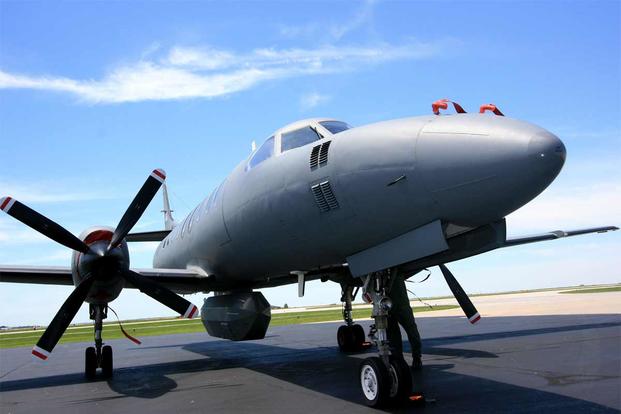The fiscal 2020 National Defense Authorization Act that passed both houses of Congress this week contains provisions to halt the planned retirement of an Air National Guard intelligence, surveillance and reconnaissance plane flown by a U.S. congressman.
The Air Force cannot spend money to retire or realign funds meant for the RC-26 surveillance plane until the Air Force secretary "certifies to the congressional defense committees that other platforms or technologies provide equivalent capabilities," according to the bill.
The amendment has made Rep. Adam Kinzinger, a Republican from Illinois and a guardsman with the Wisconsin Air National Guard's 115th Fighter Wing, quite happy.
"The congressman is pleased to see the RC-26 given an extension in the NDAA because he knows firsthand how important this reconnaissance resource truly is for the Air Guard," said Maura Gillespie, a spokeswoman for Kinzinger.
Related: National Guard Weighs Action Against Deployed Lawmaker Who Criticized Governor
Gillespie said Kinzinger, a lieutenant colonel trained as an RC-26 pilot, also sees the aircraft's value in assisting Customs and Border Patrol missions along the southern U.S. border. Kinzinger deployed with his unit to the border for the security mission in February.
Earlier this year, the lawmaker spoke out against the Guard's potential cut to the RC-26 ISR fleet. In an op-ed published in Air Force Times, Kinzinger wrote that the ISR plane could be the boost that border security needs when other resources are scarce or troops are limited by other means.
"Despite the important abilities of this reconnaissance plane, Air Guard officials announced they'll be removing it from use, and will do so quickly," he said in the Jan. 27 op-ed, following a 35-day government shutdown. "Their announcement was made quietly, as the country's attention was drawn to the government shutdown focused on the issues on our southern border."
There are currently 11 RC-26 aircraft in the fleet, according to the service.
They vary in capability: five are Block 20s and six are Block 25s, which have different avionics packages. Since at least 2009, the Guard has overseen all 11 of the medium-altitude ISR aircraft, which are used for domestic response, counter-drug operations and disaster relief, as well as to respond to assistance requests from local governments.
Retiring a portion of the RC-26 fleet could allow the Guard to focus its resources elsewhere, sources familiar with the discussions told Military.com earlier this year.
It's a move the service has attempted a few times before.
While the Air Force must hold on to the RC-26 for now, officials are weighing more drastic proposals as the service begins crafting its 2021 budget request for Congress.
During the 2019 Defense News Conference in September, multiple service officials said more resources should be spent on state-of-the-art programs instead of sustaining old weapons and aircraft.
Then-Acting Air Force Secretary Matt Donovan (most recently named to become the under secretary of defense for Personnel and Readiness at the Defense Department) said Defense Secretary Mark Esper has been open to "divesting ... legacy capabilities that simply aren't suited" for future battlefields.
"His guidance states that, 'No reform is too small, too bold or too controversial to be considered,'" Donovan said at the conference.
"The Air Force is leading the way with bold, and likely controversial, changes to our future budget. We need to shift funding and allegiance from legacy programs we can no longer afford due to their incompatibility with the future battlefields and [instead] into the capabilities and systems ... required for victory. There's no way around it," he added.
The Air Force, officials have said, must soon look for new ways to combine or redistribute missions among aircraft -- especially aircraft in limited fleets -- as they drain spending.
Because the costs of operating, staffing and equipping the force have increased over time, the service has had to budget more money just to keep existing platforms going, according to Todd Harrison, director of the Aerospace Security Project for the Center for Strategic and International Studies. Harrison published his latest analysis, "The Air Force of the Future: A Comparison of Alternative Force Structures," in October.
"When you have a large fleet, the cost per plane goes down, [but] small fleets, the cost per plane goes way up because you have huge fixed costs with each of your aircraft types," he told reporters when the report debuted.
It takes specialized equipment, maintenance and training to sustain them, taking airmen away from bigger missions, he explained.
The problem "that the Air Force has right now, which is making its operating costs so much higher, is ... they have so many small fleets," Harrison said.
-- Oriana Pawlyk can be reached at oriana.pawlyk@military.com. Follow her on Twitter at @oriana0214.
Read More: Air Force Halts Parachute, Dive and Mountain Training Ops After Airmen Deaths













